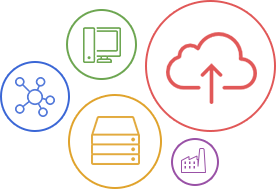Investing in IT infrastructure is critical for businesses in the digital era. However, these investments can often represent substantial financial commitments. Therefore, understanding and measuring the return on investment (ROI) of these expenditures is essential. This article explores the various strategies and methodologies for assessing the ROI of IT infrastructure investments, with a focus on setting clear goals, defining key performance indicators (KPIs), and understanding the overall impact on business outcomes.
Defining Key Performance Indicators (KPIs)
Once goals are established, the next step is defining the KPIs that will be used to measure progress toward those goals. KPIs for IT infrastructure might include metrics such as system uptime, network latency, the speed of data processing, the frequency of system crashes, or the time taken to resolve IT issues. These KPIs provide quantifiable measures that can be tracked over time and compared to initial benchmarks to assess improvement.
Also Read: Securing Your Data: Efficient Backup and Recovery Plans for Businesses
Setting Clear Goals
The first step in assessing the ROI of IT infrastructure investments is setting clear, measurable goals. These goals should align with the broader business objectives and provide a specific target to strive for and measure against. For instance, a goal might be to improve server uptime to 99.99%, reduce IT-related downtime by 50%, or accelerate data processing times by 30%.
business objectives and provide a specific target to strive for and measure against. For instance, a goal might be to improve server uptime to 99.99%, reduce IT-related downtime by 50%, or accelerate data processing times by 30%.
Measuring the Impact on Business Outcomes
"The ultimate goal of any IT infrastructure investment is to improve business outcomes, whether by increasing productivity, reducing costs, improving customer satisfaction, or driving revenue growth. Therefore, assessing the ROI of IT infrastructure also involves looking at the impact on these broader business metrics."- Emil Isanov
For example, a decrease in system downtime might lead to an increase in employee productivity, which could, in turn, result in higher revenues. Similarly, faster data processing times could enable more timely decision-making, leading to improved business agility and competitive advantage.
ROI Methodologies: Cost-Benefit Analysis, Total Cost of Ownership, and Performance Metrics
Several methodologies can be used to assess the ROI of IT infrastructure investments:
- Cost-Benefit Analysis: This involves comparing the costs of the investment (such as hardware, software, and implementation costs) with the benefits it delivers (such as increased productivity, reduced downtime, or improved customer satisfaction).
- Total Cost of Ownership (TCO): TCO takes a more holistic view of the costs of an investment, including not only the upfront costs but also ongoing costs such as maintenance, upgrades, and staff training. Lowering the TCO of IT infrastructure can increase the ROI.
- Performance Metrics: Performance metrics focus on the operational improvements that result from the investment. These might include measures of system performance, such as uptime, speed, and reliability, as well as broader business performance metrics, such as revenue growth or customer satisfaction scores.
Each of these methodologies can provide valuable insights into the ROI of IT infrastructure investments. By applying them in combination, businesses can gain a comprehensive understanding of the value and effectiveness of their IT infrastructure.
Also Read: What Exactly Is Hardware Configuration?
Conclusion
Assessing the ROI of IT infrastructure investments is a complex but crucial task. By setting clear goals, defining relevant KPIs, and measuring the impact on business outcomes, businesses can ensure they are getting the most value from their IT investments. Utilizing methodologies such as cost-benefit analysis, TCO, and performance metrics can provide a holistic view of ROI, enabling informed decision-making and ongoing investment optimization.
.png)
Facebook: facebook.com/etech7
Twitter: twitter.com/etech7
Instagram: instagram.com/etech_7/
Blog: blog.etech7.com/














